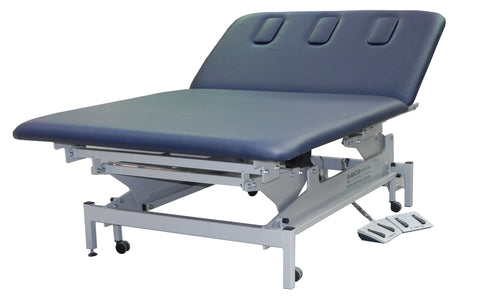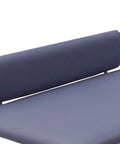Details
Discover the ABCO Bobath Neurological Table, proudly designed and manufactured in Australia. This table is perfect for neurological treatments, including the Bobath technique, and comes with a reassuring 5-year warranty. Available in widths of 1000 to 1200mm, it offers a wider base and unique lifting geometry for enhanced stability. You can choose from 1, 2, or 3 section configurations to suit your needs.
With a height range of 450 to 950mm, the table ensures easy access for patients and allows you to set a comfortable working height effortlessly. The three breathe holes with plugs make patient positioning a breeze, and the electrically operated backrest adds an extra layer of safety. Plus, the 155mm clearance below the base frame accommodates patient hoist access seamlessly. Best of all, there's no Australian GST payable on Neurological Tables.
ABCO Health Care is an NDIS provider (4050003869), ensuring quality and reliability in every product.
SKU: NE20.12021.EE000F.30H10
Upholstery Width - Maximum: 1200mm
Height - Minimum: 450mm
Height Adjustment Range: 450 - 950mm
Height - Maximum: 950mm
Schematic Drawing:

Materials: Heavy steel plate and tube
Colour: Light Grey
Wheel System: Single action retractable castors for ease of movement and 'on-the-floor' stability in use. Levelling foot on one corner. 150mm clearance for hoist access
Backrest: 680mm long. (Electric adjustment 0° / 80°) Three breathe holes with plugs.
Main Section: 1220mm
Height Adjustment Lift Operation: Two leg swing arm with electric actuator
Adjustment Control: Foot control
Supply: 230vAC +/-10%, 50hz max 1.5amp
Operation: 24vDC max 70VA
Medically approved according to EN60601-1/ AS3200
Table Weight: 80kg
Shipping Dimensions: 197 x 124 x 60cm / 90kg Shrink-wrapped on a wooden pallet with bubble wrap
ARTG No: 123573



![The essential Guide to picking your Pilates Reformer [2025]](http://abcohc.com.au/cdn/shop/articles/abco-pilates-guide.webp?v=1742176339&width=480)


